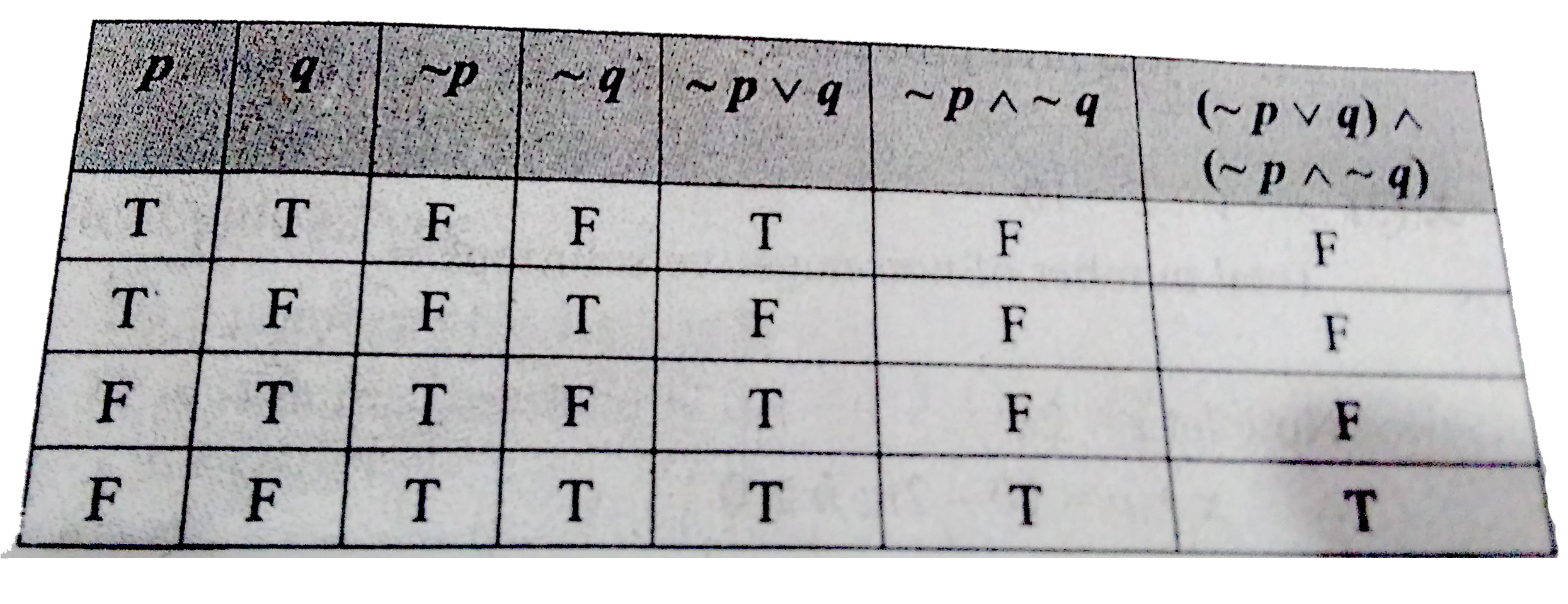Write down the truth table for the compound statements :
(~p∨q)∧(~p∧~q) Solution in Bengali
Topper's Solved these Questions
- BOOK - CENGAGE PUBLICATIONCHAPTER - MATHMETICAL REASONINGEXERCISE - Single correct answer type38videos
MATHMETICAL REASONING
- BOOK - CENGAGE PUBLICATIONCHAPTER - MATHMETICAL REASONINGEXERCISE - Archives10videos
MATHMETICAL REASONING
- BOOK - CENGAGE PUBLICATIONCHAPTER - MATHMETICAL REASONINGEXERCISE - Archives10videos
MATHMETICAL REASONING
- BOOK - CENGAGE PUBLICATIONCHAPTER - LOGARITHM AND ITS PROPERTIESEXERCISE - JEE ADVANCED1videos
LOGARITHM AND ITS PROPERTIES
- BOOK - CENGAGE PUBLICATIONCHAPTER - MATRICESEXERCISE - All Questions509videos
MATRICES
Similar Questions
Which of the following is not a statement.
02:24View SolutionStatements -1 : ~(p↔~q) is equivalent to p↔q
Statement-2: ~(p↔~q) is a tautology.07:22View SolutionStatements -1 : ~(p↔~q) is equivalent to p↔q
Statement-2: ~(p↔~q) is a tautology.01:38View SolutionLet (x0,y0) be the solution of the following equations: (2x)1n2=(3y)1n3 31nx=21ny The x0 is 16 (b) 13 (c) 12 (d) 6
02:52View SolutionIn which of the following type of matrix inverse does not exist always? a. idempotent b. orthogonal c. involuntary d. none of these
01:30View SolutionWrite down the truth table for the compound statements :
(~p∨q)∧(~p∧~q)03:05View SolutionConstruct the truth table for the followings statements :
(a) (p∧q)→~p (b)(p∧q)→(p∨q)
(c) (p∧q)→r (d)[p∧(~r)]→(q∨r)04:05View SolutionWrite down the truth table of ~p∧q
02:30View SolutionWrite down the truth table for the statement
(~p∨q)∧(~p∧~q)04:57View SolutionLet p and q be two component statement of the compound statement p∨q . If the truth value of p∨q be " F" then the truth value of p and q are respectively -
07:06View Solutionमिश्रित कथन ~(p∧q) के लिए सत्यमान सारणी बनाये
02:42View SolutionProve by Truth Table: ~(p∨q)=~p∧~q.
01:34View SolutionConstruct the truth table for (p∨q)∨~q
02:18View SolutionWrite down the truth table for the compound statements :
(~p∨q)∧(~p∧~q)08:32View SolutionConstruct the truth table for the followings statements :
(a) (p∧q)→~p (b)(p∧q)→(p∨q)
(c) (p∧q)→r (d)[p∧(~r)]→(q∨r)10:48View Solution


